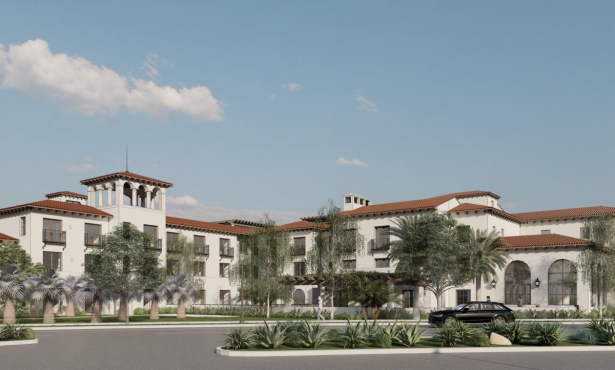Light Blue Line Not Erased
Historic Landmarks OK's Project Despite Apprehension
Santa Barbara’s Historic Landmarks Committee voted 5-to-2 to approve plans to stripe a light blue line 1,000 feet long throughout downtown Santa Barbara to show where the sea would rise if Greenland were to melt as a result of global warming. The proposal has come under intense criticism in the pages of the Santa Barbara News-Press and from developers and realtors worried that such an artistic statement might diminish values on the ocean side of the line. The matter will likely be appealed to the City Council.
Historic Landmarks meetings are traditionally poorly attended, but the Light Blue Line project has been the subject of such criticism that it was all but standing room only. Initially, it appeared as if the proposal might fail because members of Historic Landmarks had concerns about the materials used, how long it would last, and whether the explanatory text on the accompanying medallions would function as free advertising for the sponsoring organization, lightblueline.org. But Alex Pujo, a longtime member of the commission and supporter of the line, turned the tide when he asked his fellow commissioners to separate their feelings about those issues from their feelings about the line itself and the idea behind it. Only two commissioners, it turned out, felt the line was inappropriate for El Pueblo Viejo.
The others were mollified when they found out the line would last only two or three years, and when the sponsors agreed to use a material other than stainless steel-bronze or tile-for the explanatory medallion. They also ordered the sponsors’ name removed from the medallions.
Many critics showed up, arguing that the line was akin to graffiti and not really art, despite the line’s unanimous support from the Visual Art in Public Places Committee. Some from the real estate industry argued that the line would have adverse impact on the property values and require owners of properties on the ocean side of the line to disclose to potential customers that if and when Greenland completely melts, then their properties might be completely or partially submerged by the rising sea. The Light Blue Line is designed to dramatize the issue of global warming by depicting how Santa Barbara’s seashore would change if the sea level were to rise the 21 feet many climate change experts predict. Greenland’s melting is regarded as one of the worst case scenarios if humans do little or nothing to curb greenhouse emissions contributing to global warming. Experts estimate Greenland’s collapse would take anywhere from 100 to 1,000 years.
Supporters of the Light Blue Line counter that real estate agents would not be legally required to disclose their properties’ proximity to the line. They countered that if banks are willing to lend money to developments on the ocean side of the railroad tracks-where tsunamis, earthquake liquefaction, and floods are predicted-then they wouldn’t be put off by something as rhetorically inflated and speculative as the Light Blue Line. Such assurances have done little to calm the panic by developers like David Bermant, who has been working the phones and lobbying council members to oppose the project. (Meanwhile, Bermant is currently attempting to develop a below-market project on East Montecito Street, the financial stability of which has been regarded by some as iffy.)
The issue is has been a classic Santa Barbara tempest-in-a-teapot, so it is unlikely that the Landmark Commission’s ruling will be the last word. Initially, critics seized upon the cost to City Hall to see the project through-$12,000. Councilmember Helene Schneider-the proposal’s chief council sponsor-then raised that amount from one of her campaign donors to calm those waters. The next issue to emerge was whether the medallions constituted free advertising for lightblueline.org. The Landmark Commission’s ruling settled that issue. The last quibble left, it seems, is whether the line will prove divisive and damage property values.



